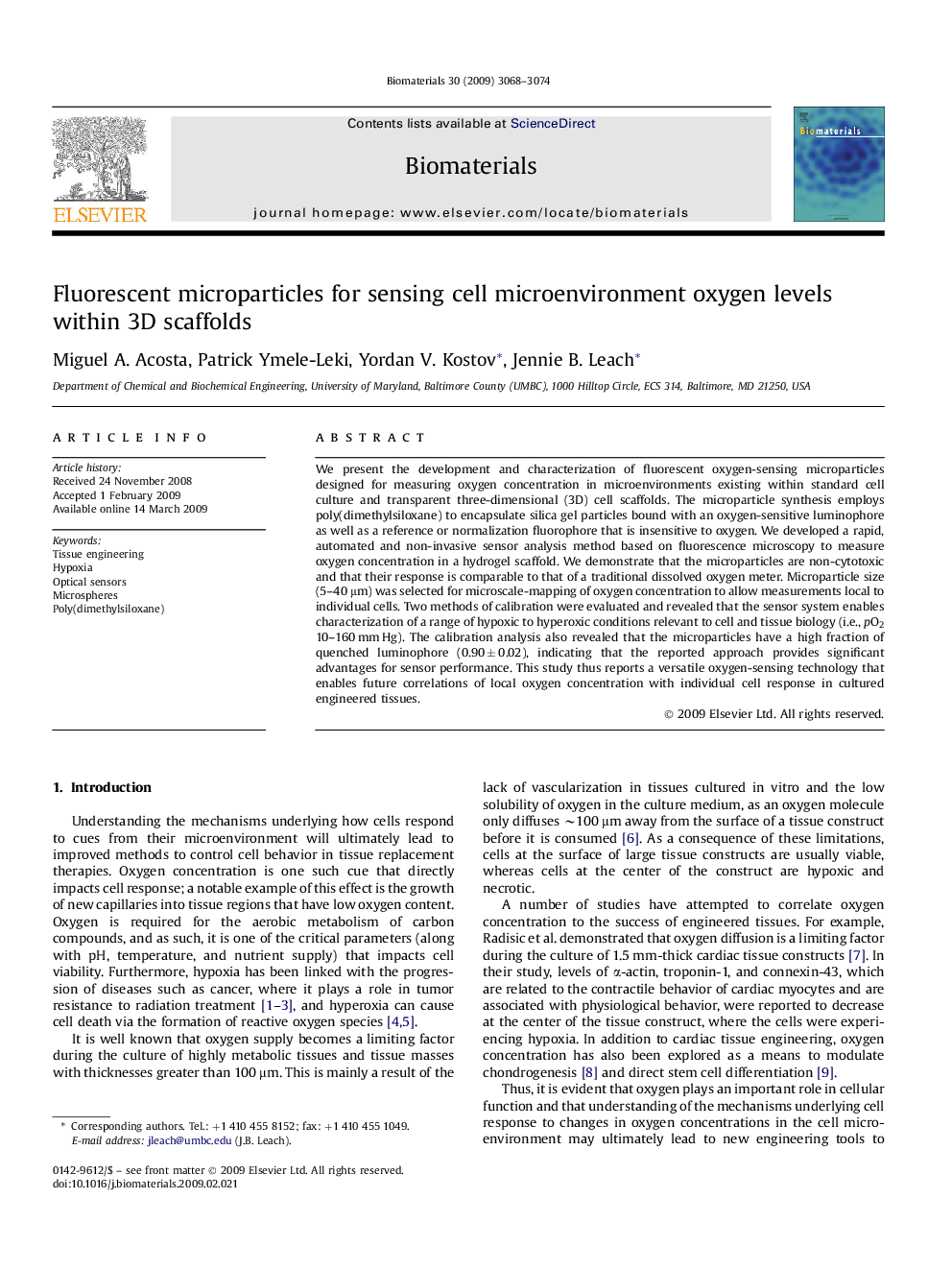| Article ID | Journal | Published Year | Pages | File Type |
|---|---|---|---|---|
| 10230015 | Biomaterials | 2009 | 7 Pages |
Abstract
We present the development and characterization of fluorescent oxygen-sensing microparticles designed for measuring oxygen concentration in microenvironments existing within standard cell culture and transparent three-dimensional (3D) cell scaffolds. The microparticle synthesis employs poly(dimethylsiloxane) to encapsulate silica gel particles bound with an oxygen-sensitive luminophore as well as a reference or normalization fluorophore that is insensitive to oxygen. We developed a rapid, automated and non-invasive sensor analysis method based on fluorescence microscopy to measure oxygen concentration in a hydrogel scaffold. We demonstrate that the microparticles are non-cytotoxic and that their response is comparable to that of a traditional dissolved oxygen meter. Microparticle size (5-40 μm) was selected for microscale-mapping of oxygen concentration to allow measurements local to individual cells. Two methods of calibration were evaluated and revealed that the sensor system enables characterization of a range of hypoxic to hyperoxic conditions relevant to cell and tissue biology (i.e., pO2 10-160 mm Hg). The calibration analysis also revealed that the microparticles have a high fraction of quenched luminophore (0.90 ± 0.02), indicating that the reported approach provides significant advantages for sensor performance. This study thus reports a versatile oxygen-sensing technology that enables future correlations of local oxygen concentration with individual cell response in cultured engineered tissues.
Related Topics
Physical Sciences and Engineering
Chemical Engineering
Bioengineering
Authors
Miguel A. Acosta, Patrick Ymele-Leki, Yordan V. Kostov, Jennie B. Leach,
